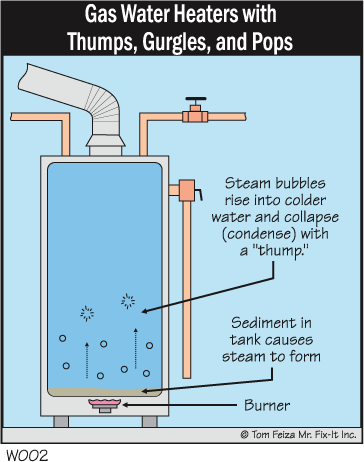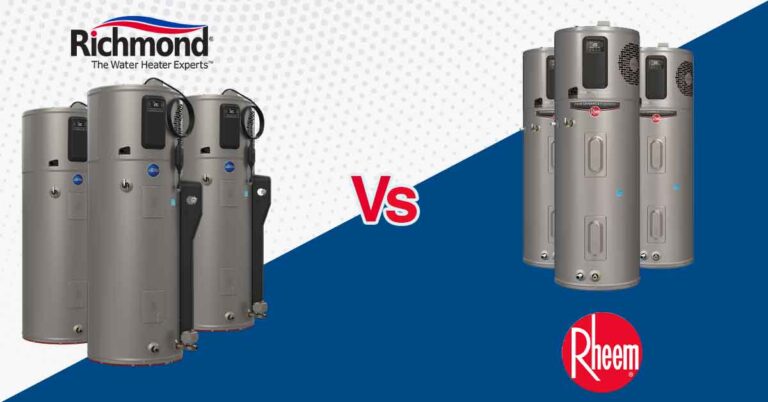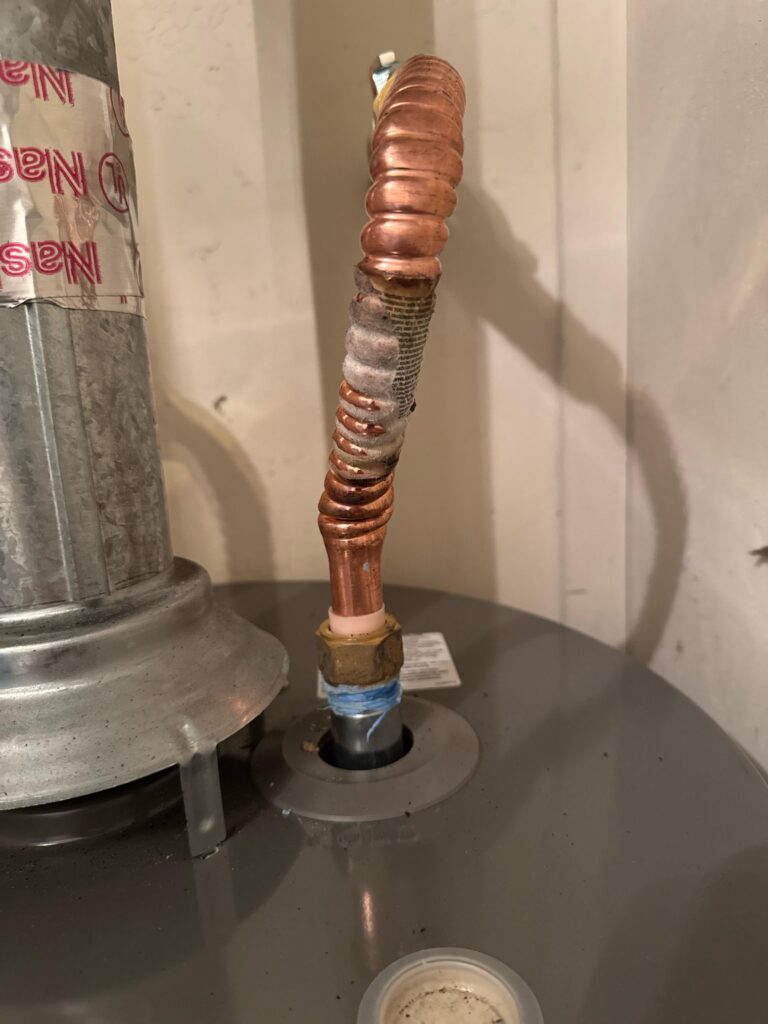Imagine stepping into your shower, eagerly anticipating a warm and relaxing experience, only to be met with a disappointing trickle of water. You’ve just installed a new water heater, hoping for a more efficient and comfortable home experience, but now you’re left wondering what went wrong.
If you’re facing low water pressure after installing your new water heater, you’re not alone. This common issue can be incredibly frustrating, especially when you’ve invested time and money into what should be an upgrade. But don’t worry, you’re in the right place.
We’ll unravel the mystery behind your water pressure woes and guide you to a solution that restores your home to its former glory. Keep reading to discover the simple steps that can transform your water flow from a mere dribble to a satisfying stream.

Credit: www.reddit.com
Common Causes
Experiencing low water pressure after installing a new water heater can be frustrating. Possible causes include incorrect installation, clogged pipes, or faulty valves. Regular maintenance and proper installation checks can help avoid such issues.
Installing a new water heater is often a moment of relief, promising hot showers and efficient water use. But what happens when you turn on the tap, and there’s no water pressure? It’s a perplexing situation, and understanding the common causes can save you from unnecessary stress. Let’s break down the possibilities.Incorrect Installation
Incorrect installation is a frequent culprit of low water pressure after setting up a new water heater. Consider whether the connections were secured tightly. Loose fittings can lead to leaks, which diminish water pressure. Another common oversight is mismatched pipe sizes. If the new heater connects to pipes that are too narrow, water flow can be severely restricted. Reflect on your installation process. Did you follow the manufacturer’s instructions precisely? A small error can make a significant impact.Blocked Pipes
Blocked pipes are another reason for diminished water pressure. Sediment buildup within your pipes can obstruct water flow. This is particularly common if your previous heater was old or if you live in an area with hard water. After installation, debris might have shifted, causing partial blockages. Flushing your system can sometimes resolve this issue. Have you noticed other fixtures also lacking pressure? This might indicate a more widespread blockage within your plumbing system.Faulty Pressure Regulator
A faulty pressure regulator can dramatically affect your water pressure. This device maintains consistent water pressure throughout your home, but it can malfunction, especially after a new installation. Consider whether your pressure regulator was adjusted during the heater installation. If it wasn’t, it might not be calibrated to the new system’s needs. Imagine the frustration of adjusting shower settings only to find the pressure still lacking. Ensuring your pressure regulator is functioning correctly can spare you that hassle. Understanding these common causes empowers you to troubleshoot effectively. Have you faced any of these issues? Identifying the root cause can lead to a swift resolution, restoring the promise of your new water heater.
Credit: summerfield-school.com
Troubleshooting Steps
Installing a new water heater should be a straightforward task, but what happens when the water pressure suddenly drops? This is a common issue that can be frustrating to deal with. Before you panic, there are some practical troubleshooting steps you can follow to resolve the issue. By systematically checking each potential cause, you can quickly restore normal water pressure in your home.
Check Installation Errors
One of the first things to examine is the installation itself. It’s surprisingly easy to make a simple mistake during the setup process. Double-check the connections to ensure they are tight and secure. Are all valves open? This might sound obvious, but overlooking such details happens more often than you think.
Consider if the heater’s size or type is suitable for your home. A mismatch can lead to pressure problems. Have you recently installed it yourself? Reflect on whether the instructions were followed carefully or if any steps were skipped. Even a small oversight can lead to big issues.
Inspect Pipe Blockages
Another possible culprit for low water pressure is a blockage in the pipes. Sediment buildup is a common issue, especially if the heater has been in use for a while. Try using a pipe cleaner or snake to clear any debris. This simple task can often improve water flow dramatically.
Do the pipes make strange noises? This might indicate air trapped inside or mineral deposits forming blockages. Think about the last time you checked your pipes; it might be time to give them a thorough inspection.
Assess Pressure Regulator Function
The pressure regulator plays a critical role in maintaining your water pressure. If it’s malfunctioning, it could be the reason behind your current woes. Test the regulator by adjusting it slightly to see if the pressure changes. Does your water pressure remain stable or fluctuate wildly?
Check if the regulator is correctly calibrated. A small adjustment can sometimes solve the problem. Have you ever considered the age of your regulator? An older unit might be due for a replacement.
By tackling these troubleshooting steps, you can identify and address the root cause of your water pressure issues. Have you tried any of these solutions before? Share your experiences and insights below. Your feedback might help others facing similar challenges.
Tools For Diagnosis
Experiencing low water pressure after installing a new water heater can be frustrating. Diagnosing the issue requires specific tools. These tools help pinpoint the problem efficiently. Understanding their usage can save time and effort.
Pressure Gauge
A pressure gauge measures water pressure accurately. Attach it to the faucet or pipe. It provides a clear reading of pressure levels. Low readings indicate issues in the system. Regular checks help maintain optimal pressure.
Pipe Inspection Camera
A pipe inspection camera offers a visual inside pipes. It reveals blockages and leaks unseen by the naked eye. This tool is crucial for identifying hidden issues. It helps ensure smooth water flow throughout the system.
Adjustable Wrench
An adjustable wrench is essential for loosening and tightening fittings. It provides the grip needed to adjust pipes securely. Ensuring tight connections prevents leaks. It’s a basic tool in diagnosing plumbing problems.
Professional Assistance
Experiencing low water pressure after installing a new water heater can be frustrating. While some issues can be resolved with a few tweaks, others might require professional assistance. Whether it’s hiring a plumber or consulting manufacturer support, knowing when to reach out can save you time, money, and headaches. Let’s explore how expert help can make a difference.
Hiring A Plumber
Not all water pressure problems can be solved with DIY methods. If your new water heater installation has resulted in unexpectedly low water pressure, it might be time to call a plumber. Plumbers have the expertise to diagnose intricate plumbing issues that might be beyond your understanding.
Imagine this: you’ve spent a weekend trying to fix the problem yourself, only to realize you’re in over your head. A professional can quickly assess whether the issue lies in the heater itself or in the connecting pipes. They can ensure that installation was done correctly and that there are no hidden leaks or blockages causing the low pressure.
Ask yourself, how much time and effort are you willing to invest before calling in the pros? Sometimes, the peace of mind that comes with professional help is worth it.
Consulting Manufacturer Support
If hiring a plumber doesn’t solve the issue, your next step could be consulting the manufacturer’s support team. Manufacturers have in-depth knowledge about their products and can offer guidance specific to your model.
Consider reaching out to them with detailed information about your situation. They might have encountered similar problems and could provide a solution or recommend adjustments that you might not have thought about. It’s not uncommon for manufacturers to offer troubleshooting tips or even send a technician to assist.
Have you ever felt the relief of finding the right answer in the user manual or through customer support? It’s the kind of insight that can turn frustration into relief.
Both hiring a plumber and consulting manufacturer support offer practical solutions, but the key is to know when to reach out for help. Are you ready to make that call and restore your water pressure to full strength?
Preventive Measures
Installing a new water heater is a significant upgrade for your home, promising better efficiency and hot water availability. However, experiencing low water pressure after installation can be frustrating. Preventive measures are crucial to ensure smooth operation and avoid unexpected issues. Let’s explore some practical steps to prevent water pressure problems after installing a new water heater.
Regular Maintenance
Regular maintenance is vital for keeping your water heater in top condition. It helps prevent sediment build-up, which can clog pipes and reduce water pressure. Set reminders for periodic checks, ensuring the heater is flushed and inspected annually.
Consider this: A friend of mine neglected maintenance, only to find their heater struggling with water pressure due to sediment blockage. Routine checks could have saved them time and money. Don’t wait for issues to arise. Be proactive.
Proper Installation Techniques
Installation plays a crucial role in determining the performance of your water heater. Ensure your plumber follows proper installation techniques, focusing on correct pipe sizing and secure connections. Incorrect installations are a common cause of low water pressure.
Think about this: Have you ever tried to fit a round peg in a square hole? Poor installation can be just as futile. Make sure your installer checks the compatibility of your water heater with your home’s plumbing system. This simple step can prevent headaches down the line.
It’s essential to ask questions during the installation process. What do you need to know to ensure everything is done right? Asking the right questions can be your best defense against future pressure problems.
Taking preventive measures can save you from the hassle of low water pressure. Make sure regular maintenance and proper installation techniques are on your checklist. You deserve a home that functions smoothly, without unwelcome surprises.

Credit: www.reddit.com
Frequently Asked Questions
Why Is Water Pressure Low After Heater Installation?
Low water pressure could be due to incorrect installation, debris in pipes, or a closed valve. Check all connections and ensure valves are fully open. If the problem persists, consult a professional plumber to inspect the system and resolve any underlying issues.
Can A New Water Heater Affect Water Pressure?
Yes, a new water heater can impact pressure if not installed correctly. Issues like partially closed valves or debris in pipes can affect flow. Ensure all connections are secure and clear of blockages. If problems continue, seek professional assistance to ensure proper installation.
How Do I Fix Low Water Pressure?
Start by checking the pressure reducing valve and ensure it’s set correctly. Check for any closed or partially closed valves. Inspect for debris in the pipes that might be causing blockages. If these steps don’t help, contact a professional plumber for further assistance.
Could Debris Cause Low Water Pressure?
Yes, debris can reduce water pressure by blocking pipes or valves. After installation, debris from the heater or pipes can accumulate, restricting flow. Regular maintenance and flushing the system can help prevent this issue. If problems persist, consult a professional plumber for a thorough inspection.
Conclusion
Solving water pressure issues after installing a new water heater is crucial. Start by checking the water valves. Ensure they are fully open. Inspect the pipes for any blockages or leaks. Tighten loose connections. Adjust the pressure regulator if needed.
Consult a professional plumber for complex issues. Regular maintenance can prevent future problems. Keep your water heater in top shape. A little attention goes a long way. Enjoy consistent water pressure and a steady supply of hot water. A small effort leads to big comfort in your home.



